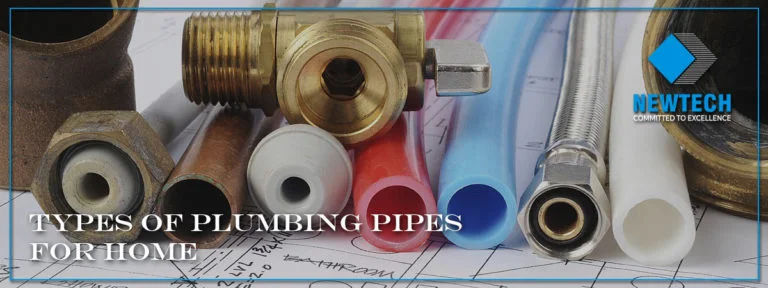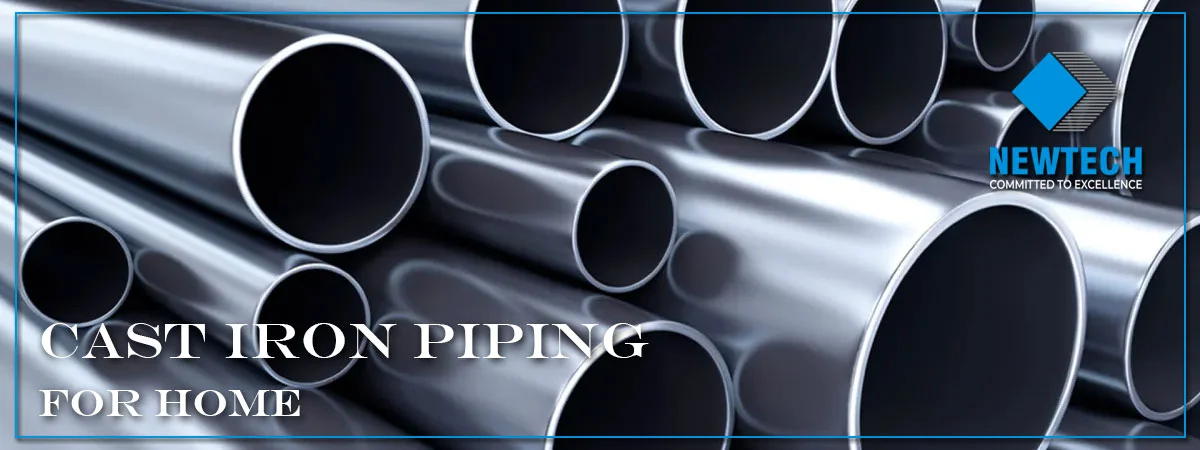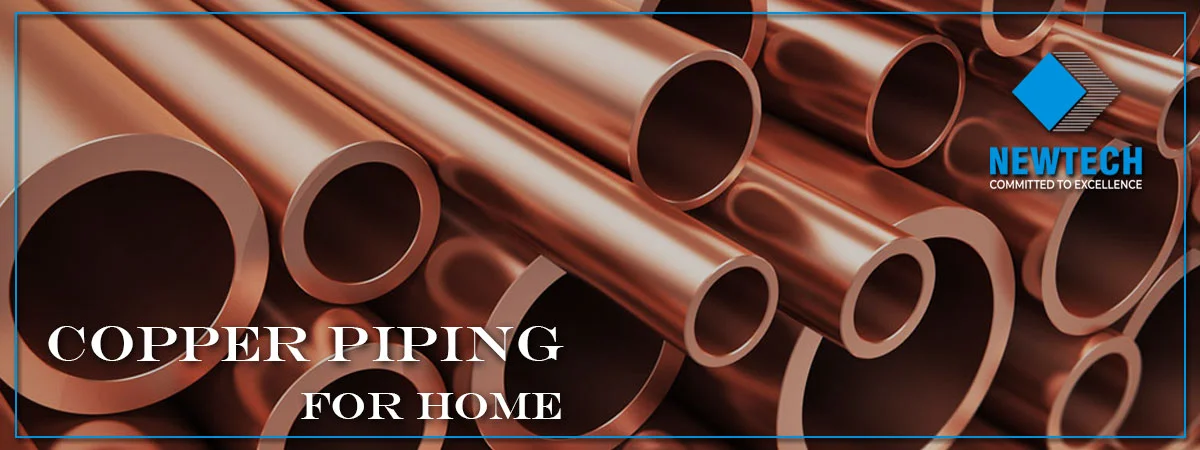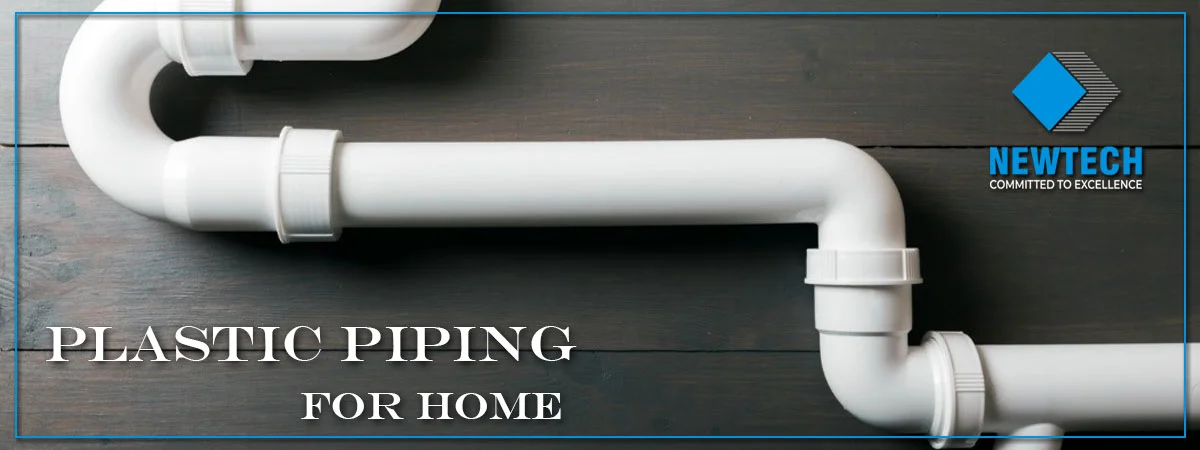Types of Plumbing Pipes for Home

Choose the Best Type of Plumbing Pipes for Home
Are you looking to replace the plumbing pipes in your home? It’s important to understand your options before choosing what type of plumbing pipes and fittings to purchase.
Pipes come in many shapes and sizes, each with its pros and cons.
Read on to learn about the various types of plumbing pipes used in homes across the world, as well as how they compare and how to pick the best one for your needs!
Copper piping

Copper Piping is the most expensive and most efficient type of Plumbing Pipes for Homes that can be used in a home.
It can be found in several types of pipes including copper piping, leaded-copper piping, and high-density polyethylene (HDPE) piping.
They are the best option for hot water because they are the only material that does not produce corroding byproducts when exposed to hot water.
It is also resistant to water softeners so it is often used with them.
Advantages Copper Piping
- Copper pipes are also an eco-friendly choice as they can be recycled and are non-toxic.
- These pipes are more expensive than PVC but offer better quality and durability in the long run
- They come in two thicknesses: thinly walled (for lower water pressure) and thick-walled (for higher water pressure).
- Thick-walled copper pipes can resist corrosion better than thinner-walled ones but will cost more money to install
Disadvantages of Copper Piping
Although copper piping is perhaps the most widely used type of Plumbing Pipes for Homes, there are some disadvantages to using it.
- Copper is a very expensive material.
- These pipes are not as durable as some other types of plumbing pipes and can be damaged easily.
- This pipe system can be difficult to install and repair.
- Copper pipes can leach minerals into the water, which can cause health problems.
Plastic piping

Plastic Piping The plastic piping option will offer a more affordable and eco-friendly way to maintain the plumbing in your home.
It’s also a good option if you’re looking to save on installation costs, as the pipes are lighter and easier to work with.
However, some homeowners find that they don’t like the feel of the plastic piping when they touch it or have problems when installing it.
Advantages of Plastic Piping
- Plastic Pipes are inexpensive and easy to install
- These Pipes are durable and can last for many years
- Resistant to corrosion and won’t rust
- Non-toxic and safe for drinking water
- Lightweight which makes them easy to transport
Disadvantages of Plastic Piping
Though plastic piping is one of the most commonly used types of plumbing pipes for homes, there are a few disadvantages to be aware of.
- These Pipes are not as durable as other materials and can break more easily.
- Plastic pipes can sometimes leach chemicals into your water supply.
- This piping is not always compatible with other types of plumbing fixtures and fittings.
- Plastic Piping can become discolored over time.
Cast Iron Piping

If you’re looking for a durable and long-lasting option for your home’s plumbing, then cast iron piping may be the right choice for you.
Cast iron pipes are strong and can withstand high temperatures and pressures, making them ideal for both hot and cold water applications.
Plus, they’re resistant to corrosion and can last for decades with proper maintenance.
Advantages of Cast Iron Piping
- Cast iron piping was the first type of pipe used in homes.
- These pipes are heavy and cannot be exposed to high temperatures, so they are typically used underground.
- These pipes were replaced by newer types of pipes that were lighter and could be heated up with a furnace or other heat source.
- It is still possible to find cast iron piping installed in homes built before 1940, but they are not popular anymore because they are much more expensive than other types of piping.
Disadvantages of Cast Iron Piping
- Cast iron piping is extremely heavy, making it difficult to install.
- The price of cast iron piping can be prohibitive for some homeowners.
- Cast iron pipes are susceptible to corrosion and rusting over time.
- If a cast iron pipe bursts, it can cause extensive damage to your home.
- Cast iron pipes are not as durable as other types of plumbing pipes, so they may need to be replaced more often.
Galvanized piping
If you’re looking for a type of plumbing pipe that will stand the test of time, galvanized piping is a good option.
Galvanized pipes are made by coating steel or iron with a layer of zinc, which protects the metal from corrosion.
This makes them ideal for use in water supply lines, as they won’t rust or corrode over time.
In addition to being durable, galvanized pipes are also inexpensive, making them a popular choice among homeowners.
Advantages of Galvanized piping
- Galvanized piping comes in different thicknesses and can be used with a wide variety of building materials.
- It has low cost, is readily available, and lasts a long time.
- A lightweight galvanized pipe can be difficult to work with because it bends easily and dents easily.
- Heavy-duty galvanized pipe is more rigid and less prone to denting.
Disadvantages of Galvanized piping
One type of plumbing pipe that you may come across is galvanized piping. Galvanized pipes are made by coating the steel pipe with a layer of zinc.
This process helps to protect the pipe from corrosion and rust. However, there are some disadvantages to using galvanized piping.
The process of coating the steel can add weight to the pipe which makes it more difficult to install than copper or PVC piping.
Also, since galvanized pipes have less flexibility than other types of pipes they tend to be more expensive.
Other types of Plumbing pipes for home:
PVC Pipes
This type of pipe is most commonly used for drainage and sewage lines because it is not affected by corrosion. PVC is also easy to work with, durable, and affordable.
ABS Pipes
An alternative to copper, ABS offers similar qualities without a higher price tag. Its color coding makes it easier to identify what piping system is being installed in the house during construction.
Ductile Iron Pipe (DI)
A rigid steel pipe made from ductile iron offers many benefits over steel pipes including resistance to corrosion and greater durability.
The downside to this type of piping is that it costs significantly more than steel or other materials like PVC.
Flexible Metal Conduit (FMC)
FMC often called flexible metal conduits comes in different sizes, shapes, and colors. The best thing about this material is that it can be bent easily into any shape needed for installation.
It doesn’t have the same weight as DI and therefore can’t carry as much water pressure as other piping systems. The trade-off is that it doesn’t corrode or dent either.
FMC is a good option if you’re looking for flexibility and ease of installation, just don’t expect it to last as long as DI.
Conclusion : Types of Plumbing Pipes for Home
As mentioned earlier, each type of Plumbing Pipe for Home has pros and cons that make it better suited for certain situations.
Knowing the differences will help homeowners pick the right type for their needs when installing new plumbing systems in their homes.
For example, if you need to run plumbing pipes through tight spaces or across tricky angles, an FMC would do the trick.
On the other hand, if you want your home to be protected against corrosive substances then look no further than PVC.
If you have any questions about the best pipes for your home, You can contact us for help.
I hope this article will be very helpful for you. If So write your comment in the comment section down.
In the realm of home plumbing, the choice of piping materials is paramount, influencing not only the functionality but also the longevity of the system. From traditional options like copper and cast iron to modern alternatives such as plastic and galvanized pipes, each material presents a unique set of advantages and considerations. While copper pipes offer durability and resistance to corrosion, they come with a higher price tag and potential health concerns. On the other hand, plastic pipes provide affordability and ease of installation but may be less durable over time. Understanding the pros and cons of each type empowers homeowners to make informed decisions tailored to their specific needs and circumstances, ensuring a reliable and efficient plumbing system for years to come.
Thanks for Reading!

